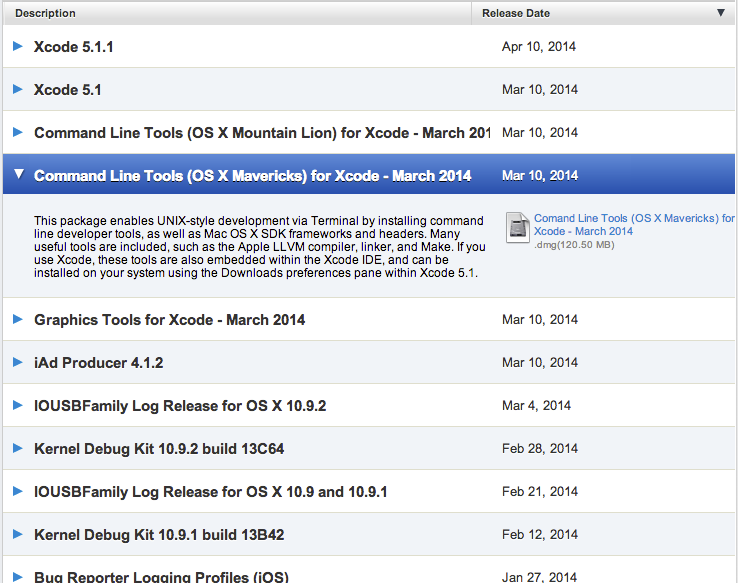Mac OS X Full Installation¶
Mac OS X is a great development enviornment for python. However, using the default python installation which comes with the operating system currently (Mavericks 10.9.2), has many issues in terms of interfacing with third party applications.
Before we can get hacking. We will need to do 3 things
- Get a C Compiler
- Install XCode
- Install GCC using Apples Command Line Tools
- Get a Package Manager
- Install Homebrew
- Install Python
- Install your own copy of Python. No more messing with system copy.
- Install pip
1. Installing XCode or Command Line Tools¶
By default, Apple does not package OS X with it’s own C Compiler.
The default way would be to download and install XCode. which is free to anyone with an apple account and can be installed through the App Store.
Another option for Lion, Mountain Lion and Mavericks users, Apple now provides an official Command Line Tools for Xcode package that you can install without needing to install Xcode itself!
You can download it from Apple’s developer site (free registration required) and search for “Command Line Tools”.

2. Install Homebrew¶
Once we have installed GCC and/or command line tools installing homebrew is very straightforward.
Open up a terminal window and enter
$ ruby -e "$(curl -fsSL https://raw.github.com/Homebrew/homebrew/go/install)"
This will install the homebrew package manager in you /usr/local/.
Any packages that you will install, including python can be found in this directory.
We also need to make sure that /usr/local/ is in our $PATH enviornment before the /bin. In order to do that, run this command.
echo export PATH="/usr/local/bin:$PATH" >> ~/.profile
Now we’re all set to start installing some packages!
3. Install Python¶
First make sure that homebrew is up to date
$ brew update && brew upgrade
Already up-to-date.
Now we are ready to install python.
$ brew install python
Note
This will install python 2, not python 3.
To install the latest version of Python 3.
$ brew install python3
This will also include pip your python package manager.
First we need to make sure that everything is up to date.
$ pip install --upgrade setuptools
$ pip install --upgrade distribute
$ pip install --upgrade pip
$ pip install --upgrade wheel
Now we’re all ready, we can install py-translate directly from PyPI
$ pip install py-translate
And we’re done!
